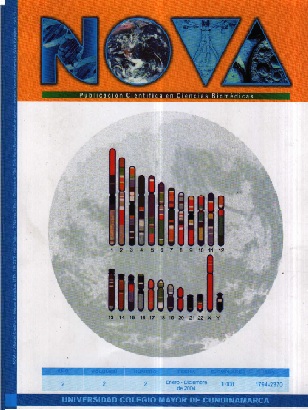NOVA por http://www.unicolmayor.edu.co/publicaciones/index.php/nova se distribuye bajo una licencia Reconocimiento No Comercial- Compartir igual
Así mismo, los autores mantienen sus derechos de propiedad intelectual sobre los artículos,
Declaración de privacidad.
Los nombres y las direcciones de correo electrónico introducidos en esta revista se usarán exclusivamente para los fines establecidos en ella y no se proporcionarán a terceros o para su uso con otros fines.
Hydrolytic Activity and Isoenzymatic Characterization of Microbial Population Isolated of Documental Heritage of General Archive of Colombia (Agn)
This work shows an isolation and evaluation model of microorganisms deterioration agents of documental heritage. 28 Isolations were recovered and identified as conservation with biodeterioration as in deposit No. 15 atmosphere of AGN (Bogotá-Colombia). Of this group, 16 microbial isolations showed hydrolytic capability on vegetable fibers when they were cultivated in with cellular walls at 1% as the unique carbon source. In the recovered microbial populations were evaluated the capability to hydrolyze cellulose, xylane, almidon and protein. Taking into account degradation haloes and the number of hydrolyzed substrates were selected four isolations: two of Penicillium sp., one of Bacillus sp. and one of Actinopolyspora sp..
Polymerase activities and accessories were quantified on them and it was determined Isoenzymatic profile to cellulase and xilanase. The results suggest: filamentous fungi and Actinomycete are more efficient degradation complex polymer (cellulose), probably the bacterial population acts as a secondary settler and Isoenzymatic profile permits discard saprophyte microorganisms, specialized in degrading cellulolytic support.









